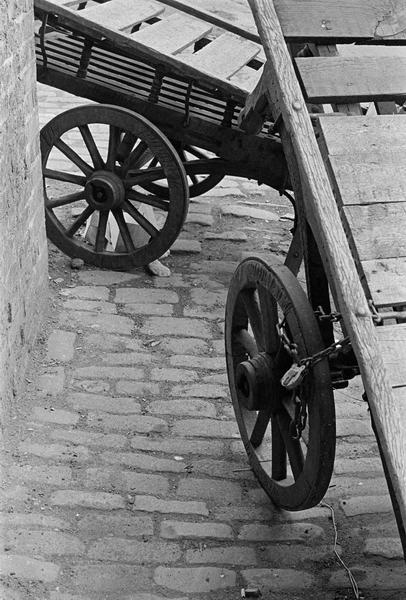London 1978
Peter MARSHALL

Barrows, Borough Market, Southwark, 1978
14s11: southwark, market, borough, cobbles, barrow
You can click on the image to go to the next picture
I plead guilty to nostalgia in this image, though I also saw it as an exercise in framing (and a slight hint of homage to one of the truly great photographers whose work I admire.) It should really not be seen in isolation but as a part of my wider work on this area around Borough Market and the nearby wharves, some of which I posted here earlier.
Hand carts such as these barrows were of course much more common when I was young, and many trades made use of them, including as I've mentioned before, jobbing tradesmen like my father who used one to carry his tools, ladders and materials.
My paternal grandfather had owned several small and not very profitable businesses and I suspect the hand cart that my father used was one that he had made himself in his younger days. Dad's large work shed, inherited from his father, was a real museum, and still had all the tools needed to build some quite fancy horse-drawn vehicles, including a small bellows furnace with a large drum of coke which was used to heat the iron rims to put on wheels such as this, and once or twice when very young I was employed as an unpaid bellows boy. Next door in a smaller shed was a treadle-powered wood-working lathe which we often used to play with when small, though fortunately we were never allowed to play with the band saw, a large and rather fiendish device and I made to adulthood with a full set of limbs. My father also worked in his youth for other companies, including Dennis, where he built wooden fire engines before they decided metal was a better idea.
For more complex iron work, a few streets away was the 'power forge', owned when I was small by my father's brother, with much belt-driven machinery and a steam hammer, but at its centre a coke fire with an electrically driven air supply on which metal ingots would be heated to the required colour before being removed with long tongs and hammered on an anvil before being worked on the other machines.